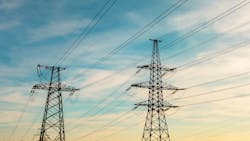Industry Stakeholders Encouraged By Inclusion Of Transmission In Biden’s Executive Order
Energy industry stakeholders continue to assess President Joe Biden’s recent executive order on the climate crisis, with several highlighting the significance of electric transmission being included in the administration’s plans.
Pattern Energy CEO Mike Garland, in a statement provided to T&D World's sister publication, TransmissionHub, on Jan. 29, said that the country “desperately needs to upgrade the transmission grid and bring it up to speed for the 21st century. Upgrading transmission is going to be a key component in achieving the 2035 clean energy goals.”
As TransmissionHub reported, the Jan. 27 executive order calls for the Chair of the Council on Environmental Quality, the Administrator of General Services, and the Director of the Office of Management and Budget, in coordination with others, to assist the National Climate Advisor, through a task force, in developing a comprehensive plan that is to aim to use, as appropriate and consistent with applicable law, all available procurement authorities to achieve or facilitate a carbon pollution-free electricity sector by 2035, as well as clean and zero-emission vehicles for federal, state, local, and Tribal government fleets.
Garland said that Pattern Energy’s Western Spirit transmission line, which is under construction in New Mexico, will help add 1,000 MW of new wind power to the grid, with the line being “a prime example of the type of innovative transmission projects that need to be supported so that the U.S. can continue adding vital wind and solar power resources across the country.”
According to Pattern Energy, the approximately 150-mile, 345-kV Western Spirit line and associated Western Spirit wind projects are targeted for commercial operation by the end of the year. Pattern Energy is co-developing the line with the New Mexico Renewable Energy Transmission Authority, which currently owns the line, according to the project website, which also noted that after the line is built, it will be acquired by Public Service Company of New Mexico (PNM).
Noting that Biden’s executive order specifically mentions transmission infrastructure, Idaho Power spokesperson Brad Bowlin on Feb. 1 said that the company agrees with its importance.
Increased and streamlined transmission development is the key to distributing renewable energy from where it is produced to where it is needed, Bowlin told TransmissionHub, adding: “Idaho Power is moving ahead with the 500-kilovolt Boardman to Hemingway transmission project, which will be a clean-energy pipeline between our region and the Pacific Northwest, beginning as early as 2026. This project has already completed the federal permitting process.”
Bowlin noted that the Boardman to Hemingway project requires a permit from the state of Oregon, with the company “working through the process to obtain that permit. We also will need a permit from Owyhee County in Idaho.”
Construction on the project, which is estimated to cost $1bn to $1.2bn, is scheduled to begin in 2023, with the line being in service by 2026 or later, Bowlin said.
Bowlin said that the company will continue to monitor specific legislation and agency rules that emerge from the policies outlined in the executive order. He also noted that Idaho Power in March 2019 announced its “Clean Today, Cleaner Tomorrow” effort and its goal of providing 100% clean energy by 2045. He said that in the near- and long-term future, the company is continuing to adopt a diverse mix of clean energy resources, including solar and battery storage, and transmission critical to integrating renewable energy.
In a statement provided to TransmissionHub on Feb. 1, GridLiance President and CEO Calvin Crowder said that the company is “encouraged by the administration’s efforts to accelerate the development of transmission projects needed to enable a clean energy future.”
GridLiance’s transmission footprint traverses areas where abundant clean energy resources exist, such as solar in southwest Nevada and wind in the Oklahoma Panhandle, Crowder said, adding that connecting those clean energy resources to dense population centers is not always easy, as policy and regulatory barriers have created challenges regarding planning, permitting, and cost allocation.
“The administration’s efforts to address these areas will be critical if we are to reach net-zero greenhouse gas emissions,” Crowder said. “FERC needs to play a key role in ensuring costs are fairly allocated. How transmission projects get planned, permitted and paid for needs to be reevaluated. The most efficient model would be a national, FERC-mandated postage stamp rate, where costs are allocated equally across the system. It will take time to achieve this goal, but in the meantime, FERC and RTOs can eliminate voltage levels and cost thresholds to improve parity.”
To read the complete article, visit TransmissionHub.
